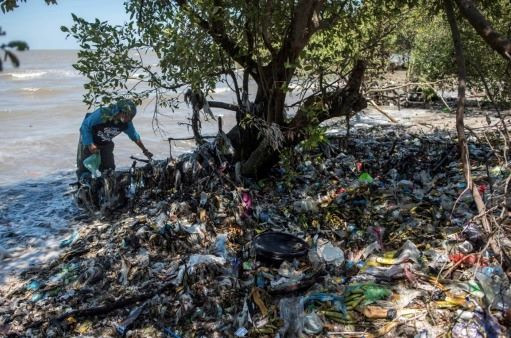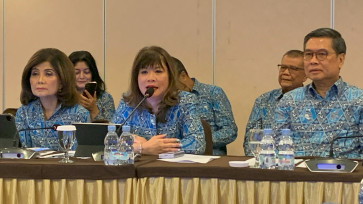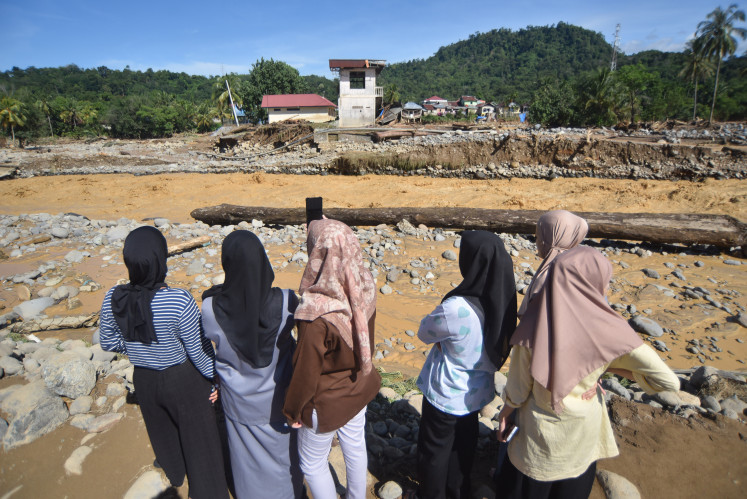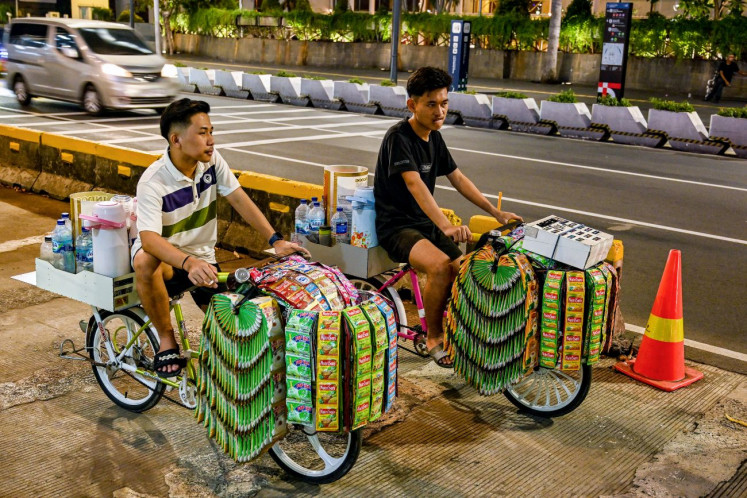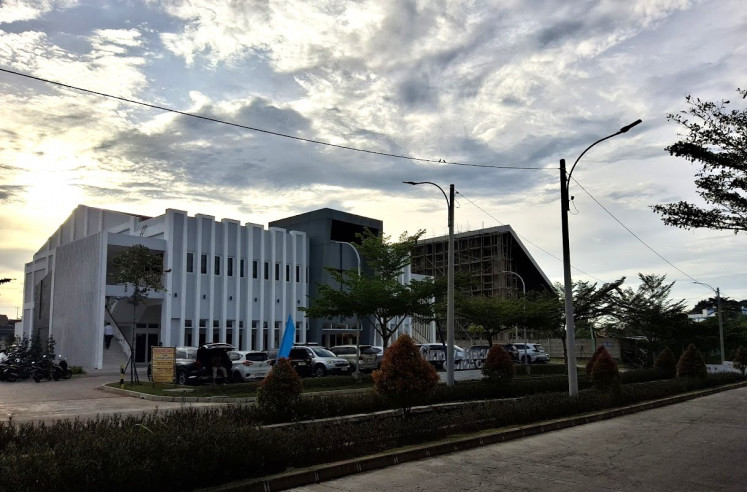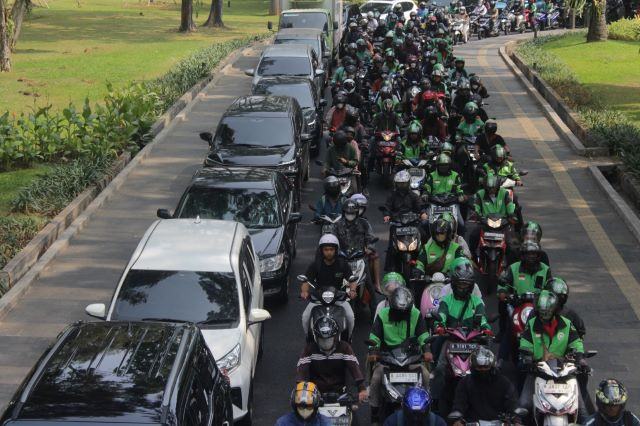Popular Reads
Top Results
Can't find what you're looking for?
View all search resultsPopular Reads
Top Results
Can't find what you're looking for?
View all search resultsIs sustainable packaging enough to eliminate plastic pollution?
Less than 10 percent of plastic waste is currently recycled globally, with the remaining often not managed properly.
Change text size
Gift Premium Articles
to Anyone
S
ince their invention in the early 20th century, plastics have been omnipresent in our daily lives and have become a global choice due to their durability, flexibility and low production cost. Industries, ranging from food to electronics, have been relying for decades on plastics, their primary material for product packaging.
Packaging serves essential roles like protection, marketing, information and convenience. To meet these demands, plastic packaging often combines materials for optimal performance, making it difficult to recycle.
Despite its ample benefits, plastic's versatility may pose risks to health and the environment.
So, are there alternative solutions to “not easy-to-recycle” plastics and problematic plastic applications, or are we simply moving toward an inevitable crisis?
Since the 1950s, plastic consumption has surged. In 2022 alone, global plastic production reached 400.3 million tonnes, with much of this used for single-use packaging to preserve food and protect fragile items.
However, environmental alarms are sounding. For instance, researcher Hannah Ritchie and colleagues estimate that 0.5 percent of plastics end up in the ocean, harming marine ecosystems. Traces of plastic also pollute mountains, forests and waterways.
To deal with the problems, businesses and governments have been showing a stronger commitment. The fifth Intergovernmental Negotiating Committee (INC-5) on Plastic Pollution, set for Nov. 25–Dec. 1 in Busan, South Korea, to achieve an internationally legally binding instrument to tackle plastics pollution problem, is indeed a promising step forward.
Now, the momentum is building as over 260 businesses, from multinationals to local enterprises, have joined the Business Coalition for a Global Plastics Treaty (BCGPT), urging governments at INC-5 to adopt an ambitious, full-lifecycle plastics treaty. This collective effort significantly supports plastic pollution solutions, fostering awareness, innovation and a sustainable ecosystem, all strengthened by the prospect of global regulations under a treaty.
Yes, the industry keeps exploring solutions like Optimizing and Harmonizing Packaging (Reduce), Re-usable Packaging and Design for Recycle (D4R). It also has been increasing recycled content along with developing bioplastics and paper-based options to reduce virgin plastic use. These innovations require comprehensive life cycle assessments and suitable waste management for bio-based plastics to ensure sustainable impact.
Furthermore, food and beverage packaging must meet strict safety and compliance standards to protect consumers. Key guidelines include Food and Drug Monitoring Agency (BPOM) Regulation No. 20/2019 and international standards like those from the United States Food and Drug Administration (FDA), the European Medicine Agency (EMA) and the European Food Safety Authority (EFSA), detailing permitted, limited and banned substances.
When creating recyclable or recycled-content packaging, companies must follow these standards, ensuring recycled materials meet the same safety levels as virgin ones. Additionally, packaging should be environmentally safe (with set KPIs), functional, competitively priced and of high quality.
I have seen leading fast-moving consumer goods (FMCG) companies take steps to reduce virgin plastic use by optimizing packaging size, increasing recycled content and using easier-to-recycle materials. They have also introduced reusable designs and innovations like paper straws.
While these tremendous efforts help, are these alternatives enough to address the plastic crisis?
Recycling is an important part of the solution. However, it is not enough. In fact, less than 10 percent of plastic waste is currently recycled globally. The remaining waste is often not managed properly, ends up being incinerated, in landfills or the environment.
It is time to improve the recycling rate and at the same time to reduce the use of virgin plastics altogether.
Extended Producer Responsibility (EPR) programs, requiring producers to manage their products' end-of-life, are gaining traction, especially in developed countries with advanced waste management. However, for EPR to be effective globally, stronger waste management systems are essential, particularly in developing countries where they remain inadequate. Therefore, the global community needs to improve waste management systems.
We all know that plastic waste (especially low value plastic/packaging waste) is often poorly managed in developing countries, where waste management budgets are exceptionally low, leading to high rates of plastic leakage into rivers and ultimately oceans. Challenges also remain in countries with more advanced waste management systems.
I would strongly suggest maximizing our efforts for waste collection, waste segregation and building the infrastructure to process related waste. We must ensure greater quantity and better-quality feedstock for secondary raw materials to increase the recycling rate and recycled content. For packaging we can work on non-food contact material if the food contact material is not yet available.
We also need stricter but more conducive regulations to prevent plastic leakage and to promote/encourage the use of sustainable materials. This is considering the higher costs incurred when industry switches to easy-to-recycle materials or to recycled-content materials. Waste management systems shall not create new problems, such as improper disposal of hazardous byproducts.
The plastic crisis requires multiple solutions. Global rules can unify multistakeholder efforts to phase out problematic plastics, while consumer behavior change is also essential. Now is the time to advocate for stronger regulations, better waste management, and a collective shift in consumption and production.
Plastics used to be “a miracle” when they were first introduced for packaging. However, now they pose challenges and are perceived as a symbol of unsustainability. It is time to rethink our relationship with plastics for the sake of the planet.
***
The writer is the education and sustainability director of Indonesian Packaging Federation (IPF). The views expressed are his own.

